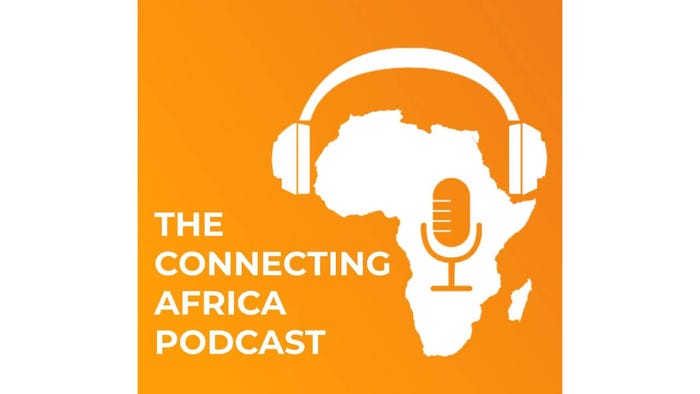MWC Kigali 2023: Closing the mobile usage gap – GSMAMWC Kigali 2023: Closing the mobile usage gap – GSMA
In sub-Saharan Africa 59% of people who are covered by a mobile network are still not using the mobile Internet – GSMA execs at MWC Kigali 2023 discussed the barriers holding back adoption and why it's important to close this usage gap.

There are a number of factors keeping African's from using the mobile Internet and if this 'usage gap' is not addressed we risk perpetuating inequalities we see in the physical world into the digital world as well.
That is the view of Max Cuvellier, head of Mobile for Development (M4D) at the GSMA, speaking to journalists at a media roundtable on the sidelines of Mobile World Congress (MWC) Kigali 2023 in Rwanda this week.
The GSMA this week published its annual Mobile Economy Sub-Saharan Africa Report for 2023, which revealed a considerable mobile Internet usage gap of 59% in the region.
The usage gap refers to individuals who are not using mobile Internet despite living in an area covered by a mobile broadband network.

Source: GSMA Mobile Economy Sub-Saharan Africa Report 2023.
When it comes to the adult population in Africa, 42% of those covered by a mobile Internet network are not using it, the GSMA found.
"If we leave the usage gap the way it is, what we're going to be doing is translating the inequality of the physical world into the digital world, and as an industry, this is not something we want to do. We want to make sure that the digital world is more inclusive than the physical world is today," said Cuvellier.
He said that Africans who do not have access to the mobile Internet are missing out on many opportunities associated with information and innovation.
"[The mobile Internet] brings access to health and education information but it is also about economic opportunities for individuals. There are missed opportunities to grow your business if you don't have an online presence, it's missed opportunities to identify new jobs. That's at an individual level, and obviously, it translates directly at the macro level, for a country. Leaving a usage gap and a coverage gap that is too high hinders [a country's] potential for growth and also for social equality," he said.
Hundreds of millions remain offline
The GSMA found that in 2022, sub-Saharan Africa had around 287 million mobile Internet subscribers. The mobile Internet usage gap in the region, however, is still significant with 680 million Africans not using the Internet.
This highlights the impact of the barriers to mobile Internet adoption, including lack of affordability and low levels of digital skills.
"If you break it down you find that out of that 680 million, 14 million already have a smartphone, but they have never gone online. Meaning they have the money to buy it, but just don't know what to do with it. We have to unpack those barriers – it could be language or people feeling there is no content for them," said Angela Wamola, GSMA's head of sub-Saharan Africa.
"Then another 180 million of that 680 million, have a feature phone, but they've never used the Internet, that's a missed opportunity for Africa," Wamola explained.
Mobile Internet penetration levels vary across sub-Saharan Africa, with Mauritius, South Africa and the Seychelles all reporting adoption rates of over 50%. Meanwhile, Benin, Chad and the Democratic Republic of Congo (DRC) have mobile Internet penetration levels below 15%.
"The reason why we are having this conversation is also to show how committed the industry is, not just the GSMA but the overall mobile industry, to understanding and addressing the usage gap. It's an opportunity to explore all the barriers that are contributing to this usage gap today, but also look into how they can be addressed at scale," Cuvellier said.
He said there are two reasons why people are not connected.
"The first one is they're not covered by a mobile Internet network and there is a misconception that this is the main barrier, when it is actually not, only 5% of the world's population have not been covered by a mobile Internet network. I like to look at this number the other way – 95% of the world's population has been covered by mobile Internet network," Cuvellier said.
"There's been a great contribution by the mobile industry in the past 15 years to cover such a large population. There is still a little work to be done with 400 million people still not covered, half of which live in Africa. Today 200 million people in Africa are not covered by a mobile Internet network, which represents 15% of the population [the coverage gap]," he said.
Barriers to mobile Internet usage
A big theme at this year’s MWC Kigali was device affordability and that is a major factor holding Africans back from getting online.
"Smartphone affordability is a key barrier to using mobile Internet in the region. This is an area of growing concern, as reducing the Internet usage gap is critical to closing the digital divide. For example, in Senegal, 61% of women and 46% of men who do not own a mobile phone reported that the lack of an affordable handset was the top reason," the GSMA said.
"The usage gap tends to affect certain populations more than others. It affects persons in rural areas, much more than people in urban areas. It affects persons with disabilities, much more, it effects person with lower literacy levels, poor households, but also women and this is something we've been researching now for nearly 10 years," Cuvellier told journalists in Rwanda.
"The first [barrier] is affordability - its affordability of services, its affordability of data. But among all those affordability issues is the affordability of smartphones and feature phones. It is that the main barrier to entry for people to use the Internet," he said.
"If you do not own a feature phone or smartphone, you just cannot use 3G, 4G, let alone 5G. This is an issue that is linked not only to the price of the device itself, but also sometimes to the taxation around the device in particular around import duties, but also in a lot of markets due to lack of financing mechanism for people to be able to make that investment."
The GSMA's report found that the average selling price of smartphones in Africa has reduced significantly in recent years, with an influx of devices priced at below US$100 – but the cost still remains unaffordable for many.
"The challenge for manufacturers is to produce devices at low enough price points that align with local earning capacities and allow them to gain market share. To ease the current cost burden, operators offer a range of initiatives, including device financing plans, instalment payments and entry-level smartphones through partnerships with manufacturers," the GSMA report said.
Besides affordability the other barriers to mobile Internet adoption include low literacy and digital skills levels, safety and security concerns, and a lack of relevant content – especially content in local African languages. The final barrier includes access and structural issues like people not having a national identity document and therefore not being able to buy a SIM card or not being eligible for handset financing schemes.
Despite these issues, GSMA researchers believe that 4G connections in sub-Saharan Africa will almost double by 2030, increasing the 4G adoption rate to about 49% of total connections in the region.
"This will be driven by continued network upgrades and efforts to make 4G devices more affordable. This transition to 4G means that the number of connections on legacy networks (2G and 3G) will decline steadily in the coming year," the report reads.

Source: GSMA Mobile Economy Sub-Saharan Africa Report 2023.
At the roundtable the GSMA and MTN Rwanda also signed a letter of intent to implement MTN's "We Care" program across sub-Saharan Africa to help drive mobile Internet adoption and increase digital literacy.
Saint Doe, chief consumer and digital officer at MTN Rwanda, told Connecting Africa that the We Care program had already trained 140,000 Rwandans and the partnership with the GSMA would help the program expand and train more people.
This week Airtel Rwanda also launched a new low cost 4G smartphone in collaboration with the Rwandan Government as part of the ConnectRwanda 2.0 program. The phone costs 20,000 Rwandan Francs (US$16.15) and for a monthly fee of 1,000 Rwandan Francs (US$0.80), users get 1GB of daily data and unrestricted calls to any network in Rwanda.
Related posts:
*Top image is of Max Cuvellier, head of Mobile for Development (M4D) at the GSMA, Angela Wamola, head of sub-Saharan Africa at GSMA, and Saint Doe, chief consumer and digital officer at MTN Rwanda, at MWC Kigali 2023. (Source: GSMA).
— Paula Gilbert, Editor, Connecting Africa


_(1)_(1).jpg?width=700&auto=webp&quality=80&disable=upscale)
.jpg?width=700&auto=webp&quality=80&disable=upscale)
_(1).jpg?width=700&auto=webp&quality=80&disable=upscale)

.jpg?width=700&auto=webp&quality=80&disable=upscale)
.jpg?width=700&auto=webp&quality=80&disable=upscale)
_(1).jpg?width=700&auto=webp&quality=80&disable=upscale)
.jpg?width=700&auto=webp&quality=80&disable=upscale)

.jpg?width=700&auto=webp&quality=80&disable=upscale)